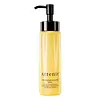Attenir Skin Clear Cleanse Oil Versus Haruharu Wonder Black Rice Moisture Deep Cleansing Oil Makeup Remover
What's inside
What's inside
 Key Ingredients
Key Ingredients

 Benefits
Benefits

 Concerns
Concerns

No concerns
 Ingredients Side-by-side
Ingredients Side-by-side

Cetyl Ethylhexanoate
EmollientPEG-2 Diisononanoate
EmulsifyingPolyglyceryl-10 Diisostearate
EmulsifyingPolyglyceryl-20 Octaisononanoate
CleansingPolyglyceryl-20 Hexacaprylate
Behenic Acid
CleansingCistus Monspeliensis Extract
MaskingAdansonia Digitata Seed Oil
EmollientArgania Spinosa Kernel Oil
EmollientLemongrass Oil
Citrus Aurantium Bergamia Fruit Oil
MaskingCitrus Aurantium Amara Flower Oil
MaskingLavandula Angustifolia Oil
MaskingElaeis Guineensis Kernel Oil
EmollientCaprylic/Capric Triglyceride
MaskingAscorbyl Palmitate
AntioxidantStearoyl Inulin
EmollientTocopherol
AntioxidantParfum
MaskingPhenoxyethanol
PreservativeCetyl Ethylhexanoate, PEG-2 Diisononanoate, Polyglyceryl-10 Diisostearate, Polyglyceryl-20 Octaisononanoate, Polyglyceryl-20 Hexacaprylate, Behenic Acid, Cistus Monspeliensis Extract, Adansonia Digitata Seed Oil, Argania Spinosa Kernel Oil, Lemongrass Oil, Citrus Aurantium Bergamia Fruit Oil, Citrus Aurantium Amara Flower Oil, Lavandula Angustifolia Oil, Elaeis Guineensis Kernel Oil, Caprylic/Capric Triglyceride, Ascorbyl Palmitate, Stearoyl Inulin, Tocopherol, Parfum, Phenoxyethanol
 Reviews
Reviews

Alternatives
Ingredients Explained
These ingredients are found in both products.
Ingredients higher up in an ingredient list are typically present in a larger amount.
This ingredient is an emollient, solvent, and texture enhancer. It is considered a skin-softener by helping the skin prevent moisture loss.
It helps thicken a product's formula and makes it easier to spread by dissolving clumping compounds.
Caprylic Triglyceride is made by combining glycerin with coconut oil, forming a clear liquid.
While there is an assumption Caprylic Triglyceride can clog pores due to it being derived from coconut oil, there is no research supporting this.
Learn more about Caprylic/Capric TriglycerideTocopherol (also known as Vitamin E) is a common antioxidant used to help protect the skin from free-radicals and strengthen the skin barrier. It's also fat soluble - this means our skin is great at absorbing it.
Vitamin E also helps keep your natural skin lipids healthy. Your lipid skin barrier naturally consists of lipids, ceramides, and fatty acids. Vitamin E offers extra protection for your skin’s lipid barrier, keeping your skin healthy and nourished.
Another benefit is a bit of UV protection. Vitamin E helps reduce the damage caused by UVB rays. (It should not replace your sunscreen). Combining it with Vitamin C can decrease sunburned cells and hyperpigmentation after UV exposure.
You might have noticed Vitamin E + C often paired together. This is because it is great at stabilizing Vitamin C. Using the two together helps increase the effectiveness of both ingredients.
There are often claims that Vitamin E can reduce/prevent scarring, but these claims haven't been confirmed by scientific research.
Learn more about Tocopherol